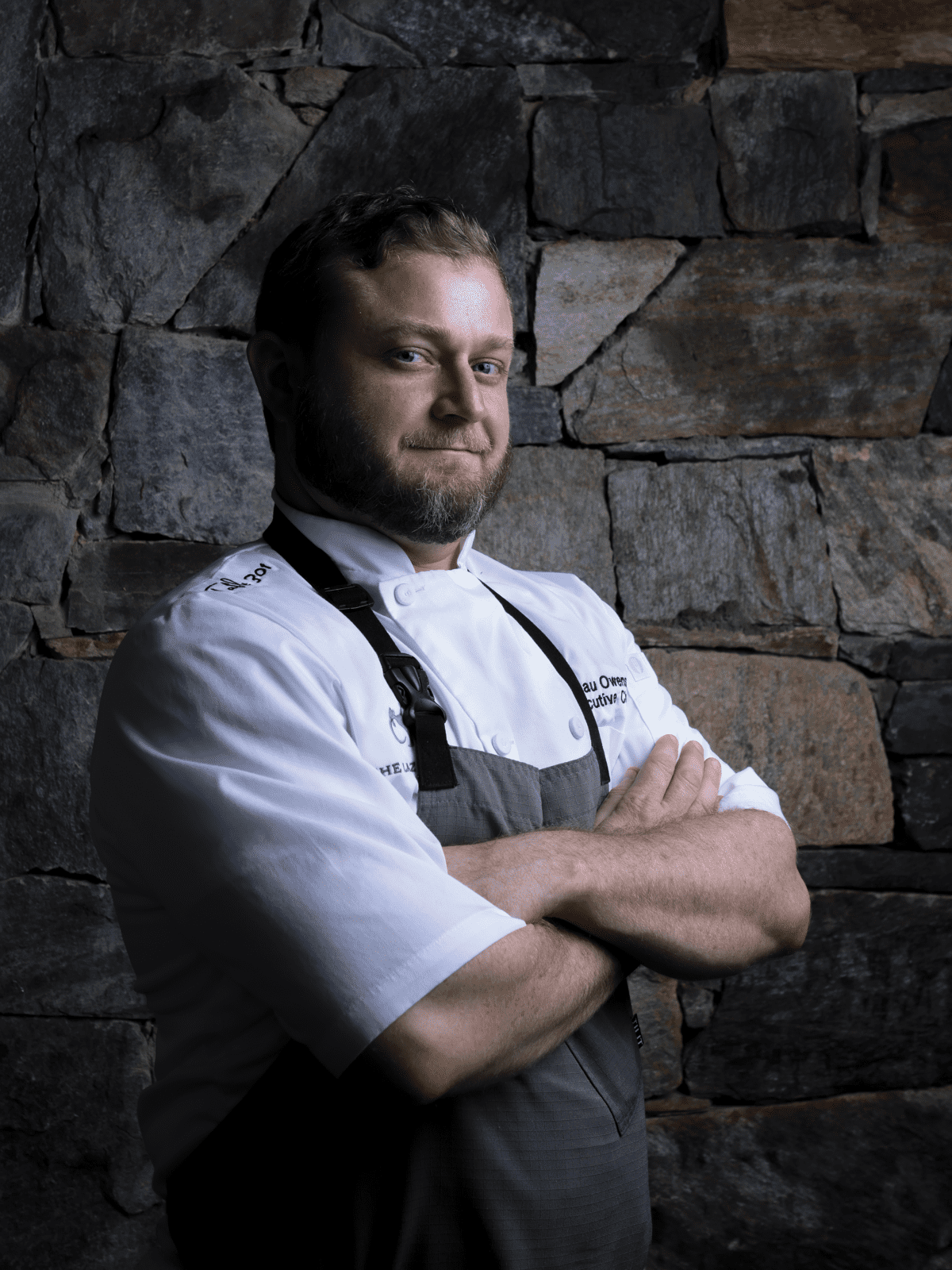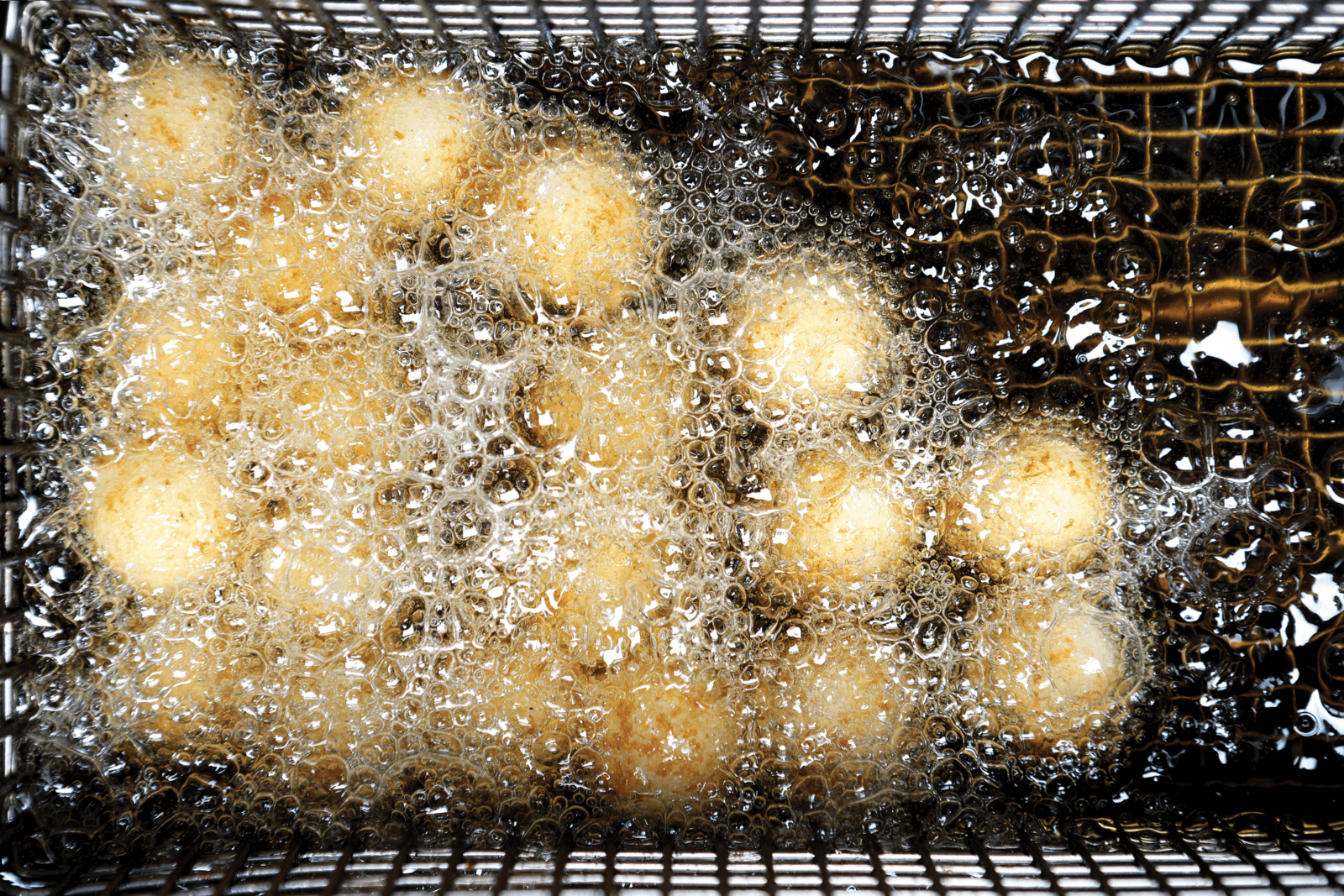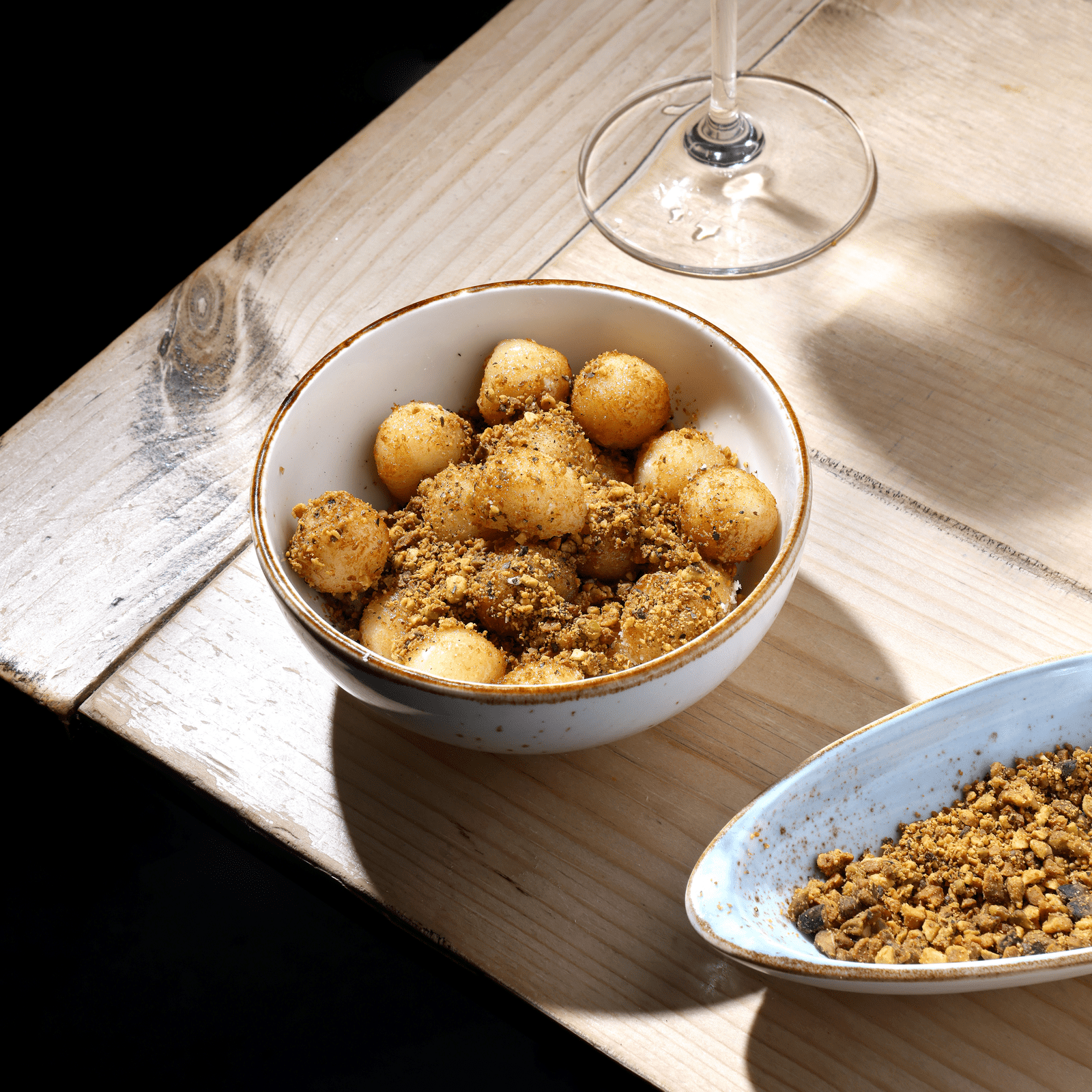Photographed by Paul Mehaffey
Tucked up against the foothills of the Blue Ridge Mountains, Greenville, South Carolina, garners its fair share of accolades these days for its food scene, which is bubbling over with good places to eat—not
to mention three James Beard Award nominees. But that wasn’t the case in 2007 when restaurateur Carl Sobocinski opened The Lazy Goat as part of his Table 301 restaurant group. At that time, a Mediterranean restaurant that served small plates was a new concept to this Southern city, yet locals embraced The Lazy Goat for its riverside location, relaxed atmosphere, and cuisine that mimes Spain, Morocco, Italy, France, Greece, and the Middle East in its flavor profiles.

When Beau Owens moved across the state from Bluffton to Greenville to assume the position of executive chef at The Lazy Goat in 2019, he was admittedly clueless as to what was facing him that first weekend at his new job. “It was May 5, 2019. I remember the date very well because it was the weekend of Artisphere [Greenville’s nationally acclaimed art festival], Clemson University graduation, Furman University graduation, and Mother’s Day,” the chef reminisces. “It was very eye-opening.” An understatement, to be sure, yet he tied on his apron and put his pans to the fire. “I figured, if this was as bad as it gets, I could handle it.”
I wanted to put in my Southern heritage, my roots. Why can’t we do a Mediterranean-style fried chicken? Or biscuits with Aleppo honey?
It was a piece of cake for Owens, who boasts some serious culinary chops. Born and raised in Columbia, South Carolina, the nascent chef took his first job washing dishes in a friend’s parents’ restaurant when he was 14. From there, he eventually moved to a fry cook position at another restaurant, where he took to the kitchen like shrimp to grits. “It was chicken wings, sports bar, turn and burn—but I enjoyed it,” says Owens. “I’ve always enjoyed the fast pace, that sense of urgency, that drive, that fire that comes with moving fast and getting food out quickly.”
Armed with an associate degree from Johnson and Wales University in Charleston, and a bachelor’s degree from the University of South Carolina in hospitality tourism management, Owens did a six-year stint as chef de cuisine at Montage Palmetto Bluff, which gave him hands-on experience helping to run the culinary piece of a 20,000-acre resort community. Though the inherent pressure in that role has lessened since he came to Greenville, he adheres to the same high standards and expectations as he did at the ritzy resort in Bluffton.
As Owens grew into his new role at The Lazy Goat, he started to put his own stamp on the menu. “I wanted to put in my Southern heritage, my roots,” the chef shares. “Why can’t we do a Mediterranean-style fried chicken? Or biscuits with Aleppo honey? I wanted to take something from the Mediterranean and infuse it with the South.”
And while he set about adding more entrees to the menu, bringing in ingredients from local farms, consulting the map of the Mediterranean region on his desk for inspiration, and experimenting with new—to him—ingredients such as Aleppo chiles, piquillo peppers, sumac, and harissa, there were certain items he was told he couldn’t alter. When Owens first took the reins in the kitchen, he sat down with Table 301’s corporate chef Rodney Freidank to review the Lazy Goat’s menu. Freidank went straight down the list and pointed out the dishes that Owens could not change; one of them was the fried goat cheese appetizer.

A signature dish and one of the most frequently ordered, the cheese-centric starter has been on the menu since the restaurant opened, and the recipe has not changed since then. It resulted from a research trip to Atlanta that Sobocinski and members of his team took before opening the Lazy Goat. At one of the restaurants they visited, Sobocinski was impressed by a fried goat cheese dish, and when he returned to Greenville, he tasked opening chef Lindsey Beck with creating a variation of that dish. Little did they suspect that the dish she produced would remain a staple on the Lazy Goat’s menu for 15 years and counting.
Each year for Table 301’s anniversary party, the chefs tally the numbers of how many of certain items they’ve sold during the year. “Just in May, we’ve sold 560 orders of the fried goat cheese,” reports Owens, who quickly calculates a one- month grand total of 10,000 goat cheese balls (at 19 per order). “And that’s not including the ones we burn,” he laughs, “or the ones that go out for our events.”
All of the half-inch orbs are rolled by hand, a job that falls largely to Caterina Francisco, who’s been in the Lazy Goat’s kitchen since day one. Once the cheese is rolled (she turns out 200 to 400
balls at a time) the balls are put in the refrigerator to set, then breaded and chilled again. Finally, the goat cheese is portioned into individual servings and stored in little bags, so they can be fried to order in 45 seconds.
Why are these little balls of goodness so appealing? “Their flavor profiles match so well together—the honey, the pistachios, and the goat cheese,” Owens says. “And let’s just be honest: anything that’s deep- fried is gonna be a little bit better than anything that’s not deep-fried.” Spoken like a true Southern chef.





